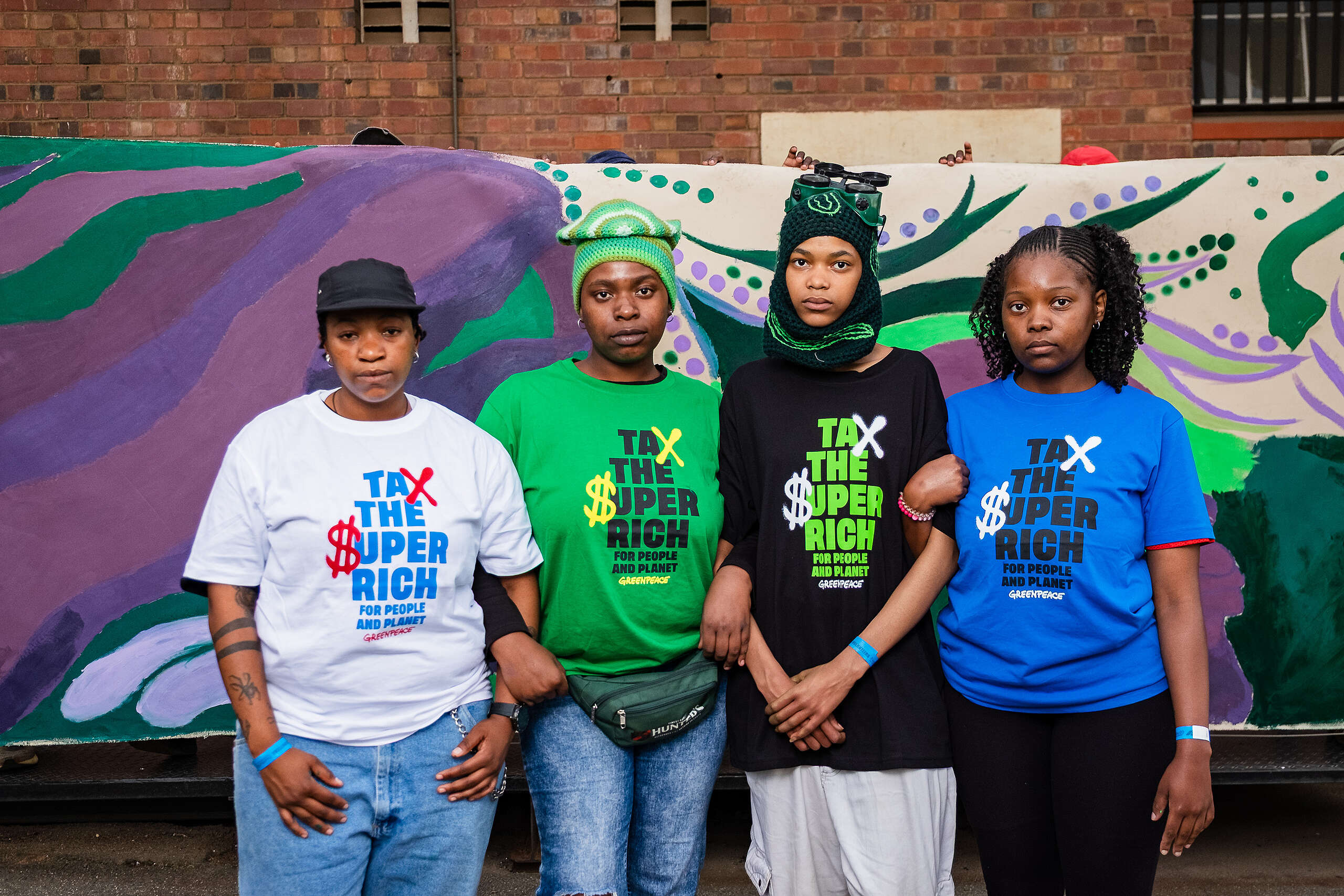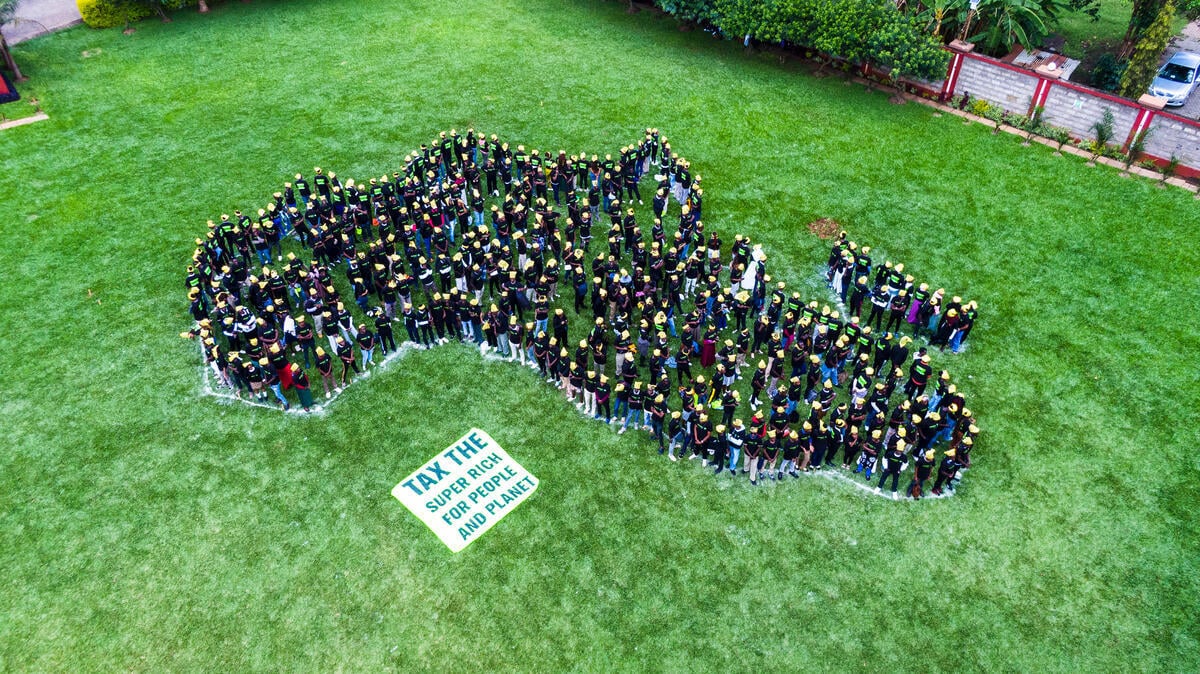Last Saturday I got so much energy from the largest Pride Walk in Amsterdam ever. The Amsterdam Pride festival has existed for 25 years now, but celebrations on our canals was canceled due to the COVID-19 pandemic. This wasn’t a big deal for me, because the Pride Walk is the more “activist-y” side of Pride which is now suddenly the major event. As a queer activist, I think it is important that Pride be a protest, because we have a long way to go for LGBTQIA+ rights. I attended the march with Queers4Climate NL, Extinction Rebellion, and, of course, Greenpeace colleagues and volunteers in solidarity with LGBTQIA+ communities in the climate crisis: a bold bunch for climate justice!
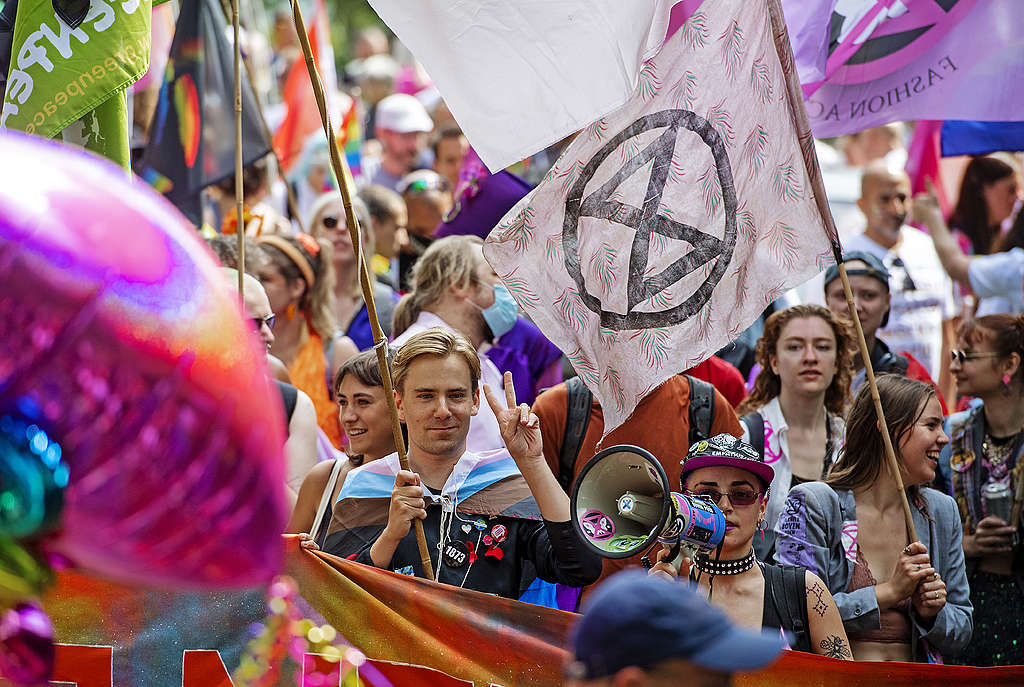
As I proudly walked, our social media channels received homophobic comments as well as comments that Greenpeace should “stick to climate action”. I believe this is exactly what we do at Greenpeace by also supporting LGBTQIA+ communities. Greenpeace has been fighting for a just and peaceful society for people, animals and the planet in all its diversity for 50 years. We leave no one behind. That’s why we participate in Pride events worldwide, from the Sydney Mardi Gras to the Queer Culture Festival in Seoul. But what about those intersections between sexuality, gender identity and the climate?
LGBTQIA+ in the climate crisis
“Human rights and climate rights are directly related,” Kyra, of Extinction Rebellion, and Queers4Climate told Greenpeace at the Pride Walk last Saturday. She joined to show support for her friends and to show that the climate crisis is an urgent problem for minorities.
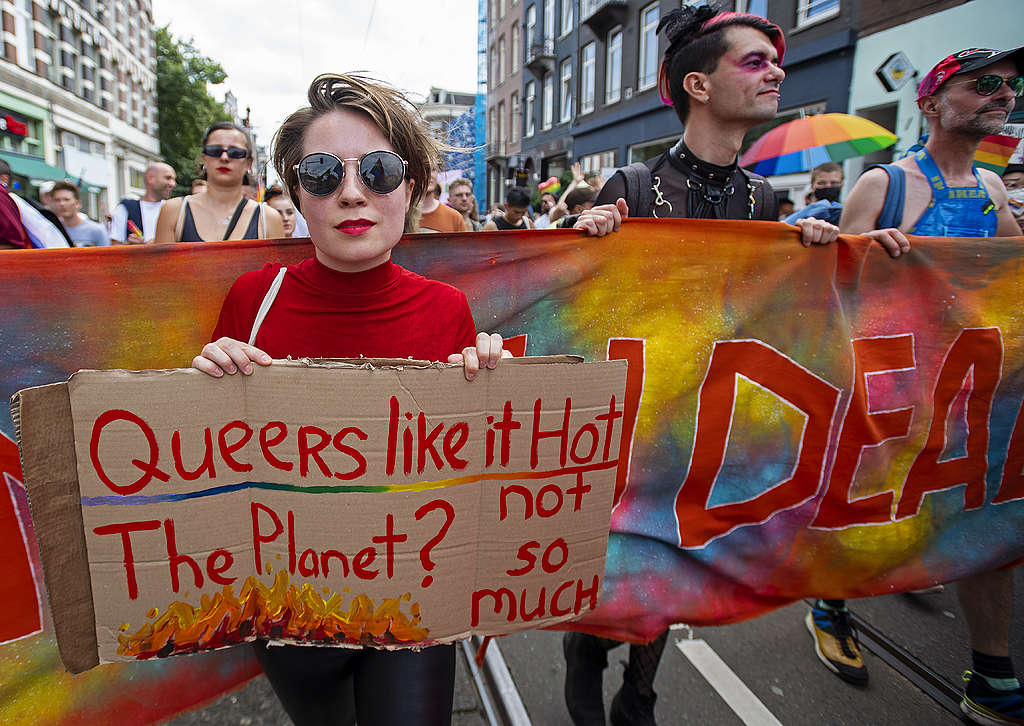
The climate crisis and the position of sexual and gender minorities are not unrelated. It is clear that LGBTI communities are often disproportionately affected by the climate crisis. We also see that where the climate crisis leads to serious disasters, the pressure on the human rights of LGBTQIA+ people increases. For example, LGBTQIA+ people are more often homeless, which is a major risk in the event of natural disasters such as floods, fires or storms. Gay-, bi- and trans-hate also often plays a role in the aftermath of natural disasters. For example, LGBTQIA+ people in Fiji are told that the increasing cyclones are not the cause of the climate crisis, sodomy is.
Pride is a Protest
“Pride is not a party, Pride is a protest,” chants Queers4Climate activist and Greenpeace community mobiliser, Jelle Zijlstra, who led the climate bloc with a megaphone. Pride is not a marketing tool, but a protest for justice. We see that large polluters want to wash their image by using LGBTQIA+ people for their propaganda. That is why this year we stood behind the activists of Queers4Climate and shouted “no pride on a broken planet” in unison. Where we can, we strengthen the capacity of activists with a passion for human rights and the climate.
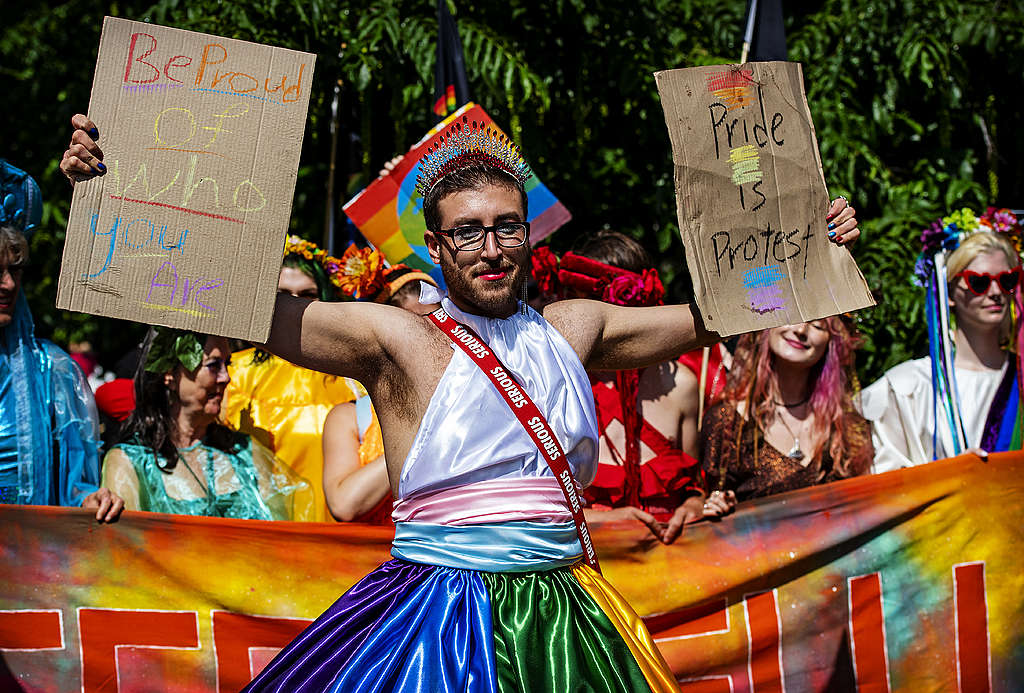
A diverse and therefore strong movement
Greenpeace wants to be an organization and movement within which LGBTQIA+ people can flourish worldwide. Aside from the intrinsic value of LGBTQIA+ people, we want Greenpeace to be a place for your activism. We believe that a diverse and inclusive movement is a stronger movement. NC Kwong of Greenpeace East Asia and the Global Rainbow Network within Greenpeace said it best: “the LGBTIQ+ community excels in challenging power dynamics and changing mindsets. These qualities are central to Greenpeace’s work. Only in a diverse and inclusive organization can we draw on these unique strengths of our LGBTIQ+ people to win our campaigns.” LGBTQIA+ activists are and will continue to be a huge inspiration for our work!
Join!
Are you an LGBTQIA+ person who is committed to climate action? You are of course very welcome to join Greenpeace, but if you’re based in Amsterdam you should totally check out our friends from Queers4Climate!
Diederick van den Ende is a campaigner with Greenpeace Netherlands and fights for a green and just future.


